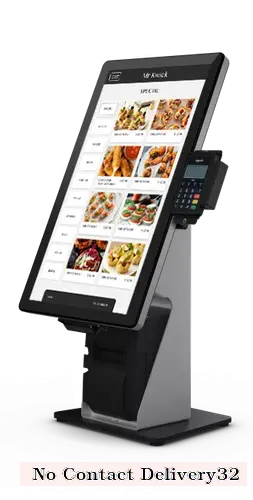

No contact delivery is a delivery model where the customer places an order and pays for it online, and then the order is prepared and delivered to the customer's location without any direct interaction between the customer and the restaurant staff. This approach has gained popularity in recent years, especially during the COVID-19 pandemic, as it allows for social distancing and minimizes the risk of exposure to the virus.
there are several benefits to implementing no contact delivery in a restaurant business:
1. Increased safety: No contact delivery allows customers to receive their orders without having to physically interact with restaurant staff, which can help reduce the risk of exposure to COVID-19 and other illnesses. This can be particularly important for customers who are immunocompromised or have other health concerns.
2. Greater convenience: Customers can place orders and pay for them online, without having to wait in lines or interact with staff. It can be especially useful for customers who are short on time or prefer to avoid human interaction.
3. Faster service: With no contact delivery, orders are typically prepared and delivered more quickly, as there is no need for customers to wait for their orders to be taken by a server or for the server to process payments. This can help reduce wait times for customers and increase the overall efficiency of the restaurant.
There are several ways that no contact delivery can be implemented in a restaurant business:
1. Online ordering: Restaurants can create an online ordering system that allows customers to browse the menu, place an order, and pay for it online. This can be done through the restaurant's website or through a third-party delivery platform.
2. Mobile apps: Restaurants can develop their mobile app that allows customers to place orders and pay for them directly through the app. This can also allow for easier repeat ordering and loyalty programs.
3. Self-service kiosks: Restaurants can install self-service kiosks that allow customers to place orders and pay for them electronically. This can be particularly useful for quick-service restaurants or fast-food chains.
4. Delivery partnerships: Restaurants can partner with third-party delivery services, such as Uber Eats, GrubHub, or DoorDash, to offer no contact delivery to their customers.
However, there are also some potential drawbacks to no contact delivery:
Loss of personal touch: Some customers may prefer to interact with restaurant staff and enjoy the personal touch that comes with full-service dining. No contact delivery can make the dining experience feel impersonal and less welcoming.
Technical issues: Online ordering and payment systems can be prone to technical issues, such as glitches or connectivity problems. This can lead to frustrated customers and negative reviews.
Increased costs: Implementing no contact delivery may require significant investments in technology and infrastructure, such as developing a mobile app or building self-service kiosks. This can be costly for restaurants, especially for small, independent businesses.
Overall, no contact delivery can be a useful strategy for restaurants looking to increase convenience, speed, and safety for their customers. However, it is important to consider the potential drawbacks and ensure that the technology and infrastructure are in place to support a seamless and efficient no contact delivery experience.
In summary, no contact delivery is a delivery model that allows customers to place orders and pay for them online, without direct interaction with restaurant staff. It can offer several benefits such as increased safety, greater convenience, and faster service. However, it can also have drawbacks such as loss of personal touch and technical issues. Restaurants considering no contact delivery should carefully weigh the benefits and drawbacks and invest in the necessary technology and infrastructure to ensure a positive customer experience.
I hope this information is helpful. Do you have any further questions on this subject?
DISCLAIMER: This information is provided for general informational purposes only, and publication does not constitute an endorsement. Kwick365 does not warrant the accuracy or completeness of any information, text, graphics, links, or other items contained within this content. Kwick365 does not guarantee you will achieve any specific results if you follow any advice herein. It may be advisable for you to consult with a professional such as a lawyer, accountant, or business advisor for advice specific to your situation.
today
Copyright © 2025 Kwick365.com
Designed by KwickPOS is the best restaurant POS